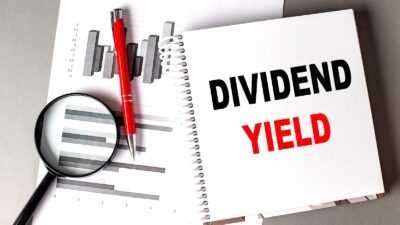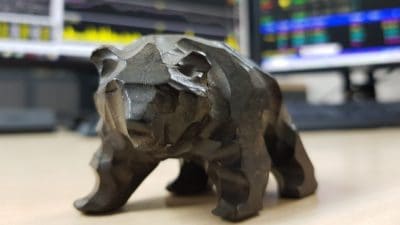Passive income comes in all shapes and sizes. Popular sources include rent yields from buy-to-let properties or coupons from bonds. Creative souls can earn extra cash from YouTube videos or songs streamed on Spotify.
Unfortunately I don’t have enough musical talent to earn passive income from songwriting, managing a rental property isn’t as hands-off as I’d like, and bond returns don’t exactly set my world on fire.
That’s why I invest a significant chunk of my money in dividend stocks.
Crunching the numbers
Establishing how big my dividend portfolio needs to be to give up work depends on two key factors.
First, there’s annual living expenses. This varies from person to person depending on lifestyle choices and financial commitments.
Second, there’s the aggregated dividend yield across my portfolio. Because yields differ significantly between individual shares and some companies have more reliable dividend histories than others, it’s worth conducting careful research before investing.
Let’s say I want £30k in annual passive income, here’s what I’d need to have in my investment pot at different aggregated yields.
| Yield | Required portfolio |
|---|---|
| 4% | £750,000 |
| 5% | £600,000 |
| 6% | £500,000 |
For £50k, the numbers look like this.
| Yield | Required portfolio |
|---|---|
| 4% | £1,250,000 |
| 5% | £1,000,000 |
| 6% | £833,333 |
Finally, for £70k, the maths is as follows.
| Yield | Required portfolio |
|---|---|
| 4% | £2,333,333 |
| 5% | £1,400,000 |
| 6% | £1,166,667 |
Using a £1m portfolio as an illustration, I could achieve that in 30 years by investing £8,174 every year assuming my portfolio grew at an 8% compound annual growth rate (accounting for dividend reinvestments and capital appreciation).
At a 5% dividend yield, I’d earn £50k in annual passive income without having to sell my stocks. That’s an appealing proposition for someone who’s reluctant to eat the geese that lay the golden eggs!
Risks
Crucially, there are risks for investors to consider.
Inflation‘s a big one. Each pound in my pocket is losing purchasing power every year. Compounded over decades, rising prices can erode my standard of living if my dividend payouts fail to keep pace with inflation.
In addition, companies I invest in might cut or suspend dividend payments. I also might have to pay tax on dividends if my equities aren’t sheltered in a Stocks and Shares ISA.
Diversification and adopting conservative estimates about my portfolio’s potential yield can mitigate these risks, but there’s no way to eliminate them entirely.
Please note that tax treatment depends on the individual circumstances of each client and may be subject to change in future. The content in this article is provided for information purposes only. It is not intended to be, neither does it constitute, any form of tax advice. Readers are responsible for carrying out their own due diligence and for obtaining professional advice before making any investment decisions.
A dividend stock to consider
To get to such a portfolio size, one dividend stock investors could consider buying is global investment manager M&G (LSE:MNG). It’s one of the most impressive passive income generators in the FTSE 100 with a mighty 9.3% yield.
Cost-cutting initiatives have boosted the stock’s investment appeal. The group delivered £73m in savings during 2023 and it aims to reduce its cost base to the tune of £200m by 2025.
Moreover, the PruFund franchise on M&G’s wealth platform continues to impress, attracting significant inflows over recent years thanks to rising yields.
Granted, dividend cover isn’t as strong as I’d like at 0.6 times earnings. Accordingly, it’s worth considering other dividend shares with lower yields but more robust cover to complement a position in M&G.
Despite my concerns about the stock’s dividend sustainability, a forward price-to-earnings (P/E) ratio of 9.1 looks attractive. But I think the risks are adequately compensated by today’s cheap valuation.








